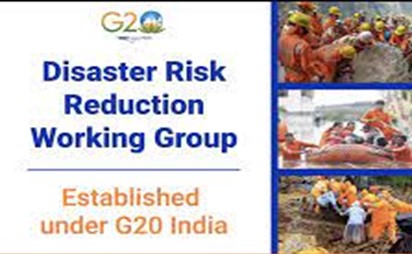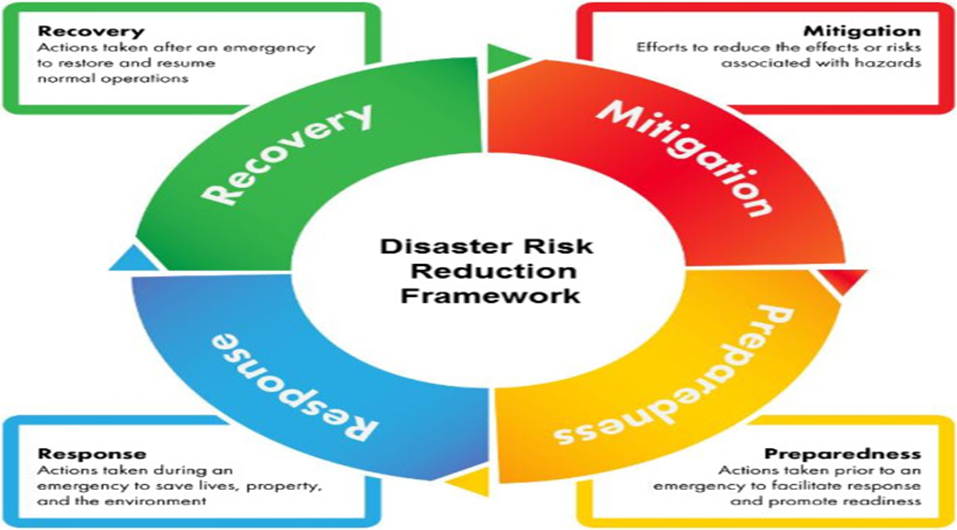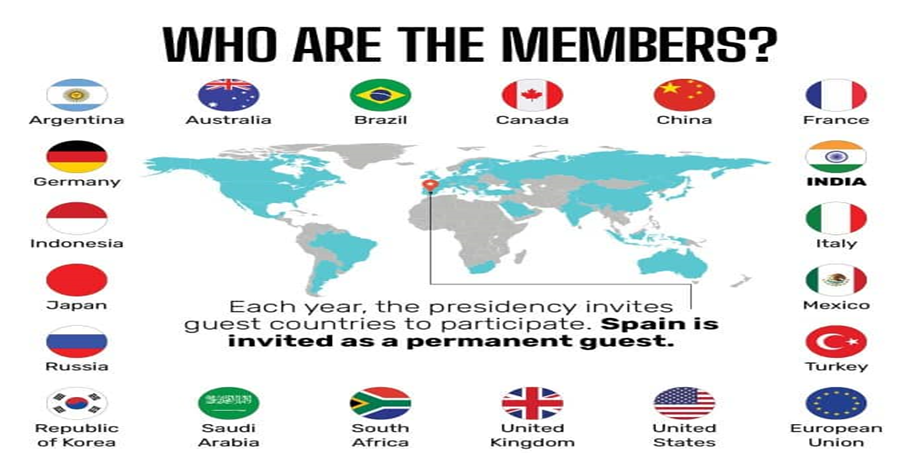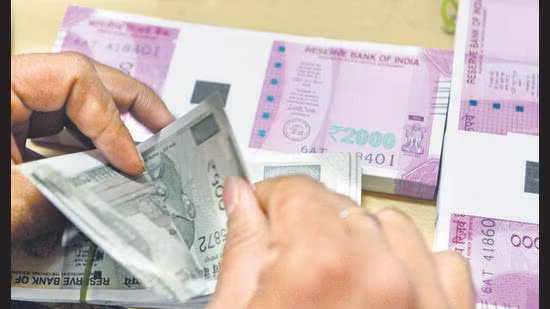- Courses
- GS Full Course 1 Year
- GS Full Course 2 Year
- GS Full Course 3 Year
- GS Full Course Till Selection
- Answer Alpha: Mains 2025 Mentorship
- MEP (Mains Enrichment Programme) Data, Facts
- Essay Target – 150+ Marks
- Online Program
- GS Recorded Course
- Polity
- Geography
- Economy
- Ancient, Medieval and Art & Culture AMAC
- Modern India, Post Independence & World History
- Environment
- Governance
- Science & Technology
- International Relations and Internal Security
- Disaster Management
- Ethics
- NCERT Current Affairs
- Indian Society and Social Issue
- NCERT- Science and Technology
- NCERT - Geography
- NCERT - Ancient History
- NCERT- World History
- NCERT Modern History
- CSAT
- 5 LAYERED ARJUNA Mentorship
- Public Administration Optional
- ABOUT US
- OUR TOPPERS
- TEST SERIES
- FREE STUDY MATERIAL
- VIDEOS
- CONTACT US
G20 AND ITS DISASTER RISK REDUCTION WORKING GROUP
G20 AND ITS DISASTER RISK REDUCTION WORKING GROUP

LATEST CONTEXT:
- Recently, under India’s G20 Presidency, the First G20 Disaster Risk Reduction Working Group (DRR WG) meeting has taken place, where the importance of Disaster Risk Reduction (DRR) has been highlighted by India.
WHAT IS DISASTER RISK REDUCTION:
- To encourage collective work by the G20, undertake multi-disciplinary research and exchange best practices on disaster risk reduction, a new working group on Disaster Risk Reduction has been established under India's Presidency.
- The first G20 Disaster Risk Reduction Working Group meeting had taken place in Gandhinagar, Gujarat where the G20 Troika consisting of three developing and emerging economies- Indonesia, India and Brazil came together to achieve targets set by Sendai Framework for Disaster Risk Reduction.
HIGHLIGHTS OF THE MEETING:
- The governments of G20 countries have been called upon at the G20 Disaster Risk Resilience Working Group to build a social protection system with an effective and preferred instrument for disaster risk financing.
- The need for new-age Social Protection Systems that invest in local risk resilience to mitigate, prepare, and recover from disasters has been emphasized.
The five priorities outlined:
- Global coverage of Early Warning Systems related to disasters.
- Increased commitment towards making disaster-resilient infrastructure systems.
- Providing stronger national financial assistance for DRR.
- Strengthening national and global disaster response systems.
- Higher application of ecosystems-based approaches to Disaster risk reduction.
The G20 DRR WG meeting intended to include considerations for the Sendai Framework’s (2015-2030) mid-term review, inform future global policies and initiatives related to DRR and renew multilateral cooperation at all levels.
NEED FOR CREATING G20 DISASTER RISK REDUCTION WORKING GROUP
- The Group of 20 nations, which brings together two-thirds of the world’s population (4.7 billion), 85% of global GDP, and 75% of International Trade, has a large exposure, to risk from natural disasters vulnerability to asset concentration.
- According to World Risk Index, four G20 nations are there out of the top 10 vulnerable countries.
- The estimated annual average loss in the G20 countries due to disaster alone is USD 218 billion, which is equivalent to 9% of the average annual investment in infrastructure made by them.

KEY STRATEGIES FOR DISASTER RISK REDUCTION
Better Urban and Economic Development:
- Risk can be reduced mainly by reducing vulnerability and exposure to risk through measures such as better urban and economic development, reduction of inequality and poverty, protection of the environment, etc.
- For example, India’s strategies for the management of flood risk and its effective implementation help in reducing and managing extreme weather conditions such as floods, cyclones, tsunamis etc…
Financing For Disaster Risk Reduction:
- The financial availability of a country for dealing with disaster risk is limited as they flow through government budgets and are dependent on a country’s financial status hence there is a need to re-frame financing for disaster risk reduction.
- Lines of credit, global tapping of resources, and new and innovative tools for financings like the creation of reserve funds can be explored as a solution.
Resilient Infrastructure development:
- Infrastructures developed from public funds such as roadways, railways, airports, ports, shipping and electricity lines need to be resilient to disasters and increment needs to be provided on a regular basis for its effective development and management and reflects social benefits.
Handling Intensive and Extensive Risk:
- Intensive risks such as low-frequency and high-impact events and extensive risks such as the risk of losses from frequent but moderate impacts should be worked out and different strategies need to be adopted for its effective handling and management.
- However, a large portion of the losses is because of extensive events and dispersed events such as lightning, heatwave, landslides, and local floods cause enormous losses. Hence, targeted implementation to reduce losses can have a short to medium-term impact on extensive risk events.
Multi-sectoral, Multi tired Effort:
- Disaster risk reduction requires a multi-sectoral and multi-tiered effort and hence the efforts need to be integrated both vertically and horizontally i.e., from local to sub-national to national to global and across sectors respectively to manage unknown risks.
- As the world is interdependent and interlinked, the G20 can help develop such strategies.
Initiatives for Disaster Risk Reduction at the Global and national level:
Global:
- Green Climate Fund’s Sectoral Guide on Climate Information & Early Warning Systems
- The Climate Risk and Early Warning Systems (CREWS)
- Sendai Framework for Disaster Risk Reduction (2015-2030) which replaced the Hyogo Framework for Disaster Risk Reduction. (2005-2015)
- International Day for Disaster Risk Reduction - 13th October
India’s Initiatives:
- National Disaster Management Plan (NDMP) and the establishment of the National Disaster Management Authority (NDMA) and State Disaster Management Authority (SDMA).
- Coalition for Disaster Resilient Infrastructure Society (CDRIS)
Way Forward
- The collaboration and coordination among its members and other stakeholders by G20 on disaster-resilient infrastructure, early warning systems, response systems for disaster risk reduction and financial frameworks.
- Innovation and research on disaster risk reduction, especially on the use of technology, data and ecosystems-based approaches needs to be promoted.
- The 2030 Agenda for Sustainable Development, the Paris Agreement on Climate Change and the New Urban Agenda ensure that no one is left behind and needs to be aligned with G20 DRR and it provides an opportunity for G20 countries to take a lead in the implementation of Sendai framework till 2030.
PRELIMS FOCUS:
G20 countries:
Germany, USA, Russia, United Kingdom, Japan, Italy, Saudi Arabia, Indonesia, Turkey, Argentina, Australia, Brazil, South Africa, South Korea, China, Mexico, European Union, France, Canada, India (Tricks to remember G20 Countries: GURU JI SITA AB SSC ME FCI)


Prelims:
Q. In which one of the following groups are all the four countries members of G20? (2020)
(a) Argentina, Mexico, South Africa and Turkey
(b) Australia, Canada, Malaysia and New Zealand
(c) Brazil, Iran, Saudi Arabia and Vietnam
(d) Indonesia, Japan, Singapore and South Korea
Ans: (a)
Mains:
Q. Discuss the recent measures initiated in disaster management by the Government of India departing from the earlier reactive approach. (2020)
Q. Vulnerability is an essential element for defining disaster impacts and its threat to people. How and in what ways can vulnerability to disasters be characterized? Discuss different types of vulnerability with reference to disasters. (2019)
Q. Describe various measures taken in India for Disaster Risk Reduction (DRR) before and after signing ‘Sendai Framework for DRR (2015-30)’. How is this framework different from ‘Hyogo Framework for Action, 2005’? (2018)



